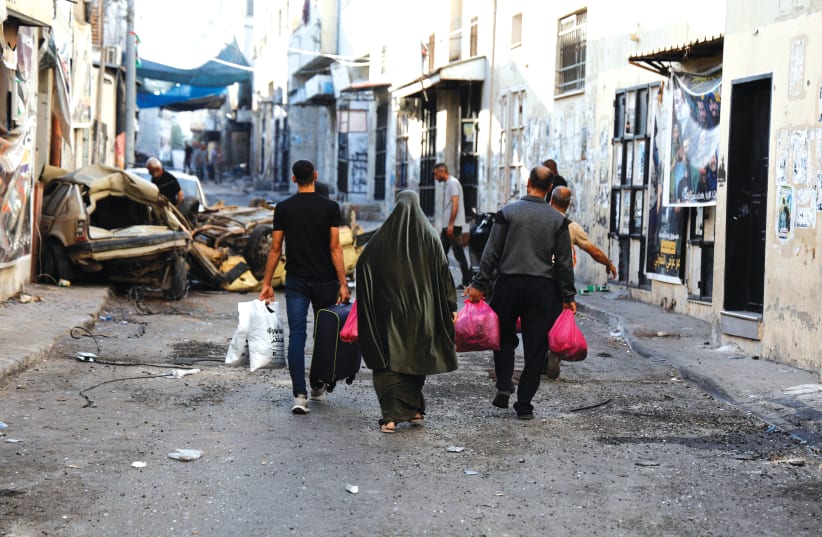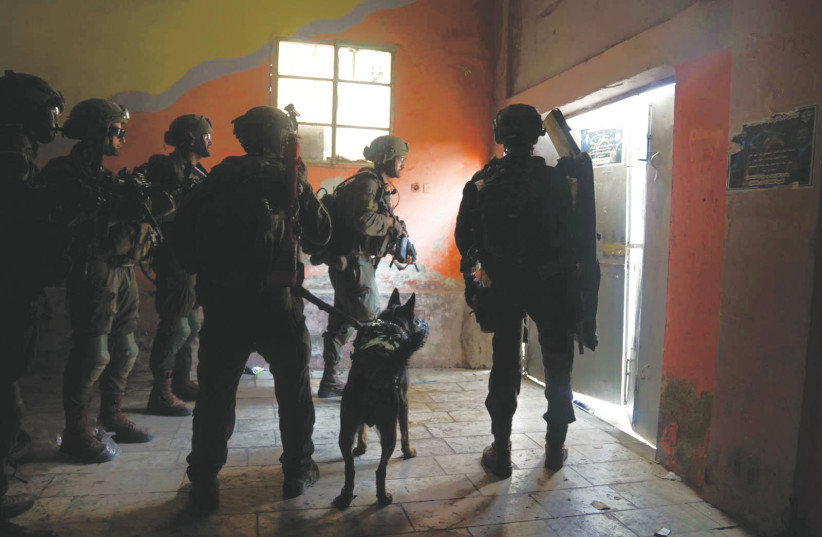The IDF’s House and Garden operation in Jenin marked a positive shift in the mindset of Israel’s political and military leadership. With the government struggling to effectively combat the wave of terrorism in Judea and Samaria, particularly in the northern region of Samaria, alternative approaches were deemed necessary.
During the two-day operation (July 3-5), 12 terrorists were killed, over 300 suspects apprehended (including 30 who were “wanted”), and numerous explosives, weapons, and ammunition were destroyed, along with underground explosives laboratories. Funds earmarked for terrorism were also confiscated. However, this operation merely represents the beginning and was neither extensive nor comprehensive enough to tackle the pervasive terrorism emanating from Jenin.
House and Garden was intentionally designed for “basic” objectives. Therefore, similar to the Break the Wave approach, it was not characterized as a full-fledged “military operation.” The distinction between a military operation and a military activity is also evident in the number of combatants involved. In the current operation, the IDF deployed a single central combat brigade (Oz), as compared to the five divisions and thousands of reserve soldiers deployed during the Defensive Shield operation.
The House and Garden military activity differs from the Break the Wave military activity in several aspects, signifying a shift in the perspective of Israel’s decision-makers.
First, House and Garden spanned two consecutive days without interruption, whereas the Break the Wave was a daily and non-continuous effort. Second, the military activity within Jenin as part of House and Garden delved deeper than the day-to-day Break the Wave activity. Thirdly, the intensity of the firepower and measures employed in Jenin during House and Garden surpassed those of Break the Wave, which focused on thwarting real-time terrorist operations and serving as a means of retribution following attacks.
Another noteworthy development within the framework of House and Garden was the utilization of UAVs (drones), and attack helicopters to carry out airstrikes in the Jenin area. This marked a highly unusual occurrence that had not been witnessed since the days of the Second Intifada. Thus, it symbolizes a significant shift in perception among the nation’s leaders.
Enhancing IDF's operational freedom
The focus of House and Garden was to enhance the IDF’s operational freedom and its capacity to counter terrorism in the Jenin area. Over the past year and a half, the IDF has faced significant and determined resistance when conducting counter-terrorism operations in Jenin. Additionally, barricades, nets on rooftops, and explosive devices were placed strategically to impede the IDF’s movements.
It is important to note that the goals of House and Garden were primarily tactical in nature, lacking any strategic or political dimensions. Secondary goals included damaging terrorist infrastructure, particularly targeting munitions and rocket laboratories, and blocking roads with explosive devices. Additionally, the operation was aimed at disabling surveillance cameras utilized by terrorist organizations in Jenin, to plan and coordinate attacks against IDF forces.
Therefore, the operation was not intended to be decisive. Instead, it served as a foundational preparation for potential future military activities. These could continue as an extension of Break the Wave activities, escalate into a more intensive operation resembling House and Garden, or evolve into a larger-scale military operation akin to Defensive Shield.
House and Garden signified a shift in perception among Israel’s leaders, but alone it is insufficient to achieve significant deterrence and disrupt terrorist organizations in Judea and Samaria, particularly in Northern Samaria and Jenin. Israel must capitalize on the groundwork laid during this operation to take more aggressive action against terrorism in Jenin and, subsequently, in Nablus. Therefore, the conclusion of the House and Garden military operation marks the end of the beginning, signaling the need for the next phase.
It is anticipated that the results of the operation will lead to a temporary reduction in terrorist activities from the Jenin area, targeting IDF soldiers and Israeli citizens. However, given the operation’s time, space, and depth limitations, it is likely that terrorist organizations will regroup and regain strength in the short and medium term, seeking to restore their military capabilities in Jenin.
Consequently, in the short and medium term, the IDF must continue to launch airstrikes against terrorists and their infrastructure in Judea and Samaria. The focus of the IDF’s offensive and air-based operations should be on Jenin and Nablus. Additionally, regular military raids on Jenin are necessary to prevent the resurgence and rebuilding of terrorist organizations, including their rocket and explosive manufacturing facilities.
Simultaneously, in the longer term, the IDF should develop comprehensive plans for an extensive military operation in Jenin. This operation would involve deploying significantly larger ground and air forces to penetrate deep into the refugee camp, targeting a substantial number of terrorists and the leadership of these terrorist organizations, which represent the enemy’s center of gravity.
This operation would be akin to Defensive Shield but limited to the Jenin area. Subsequently, a similar plan would be required for the Nablus area, another significant terrorist stronghold in Northern Samaria.
By pursuing these strategic actions, Israel aims to dismantle terrorist infrastructure, eliminate key operatives, and ultimately enhance security and stability in the region.
The writer has a Ph.D. in political studies. He is a military strategy and national security expert, and a researcher at the Jerusalem Institute for Strategy and Security and the Israel Defense and Security Forum (Habithonistim).

